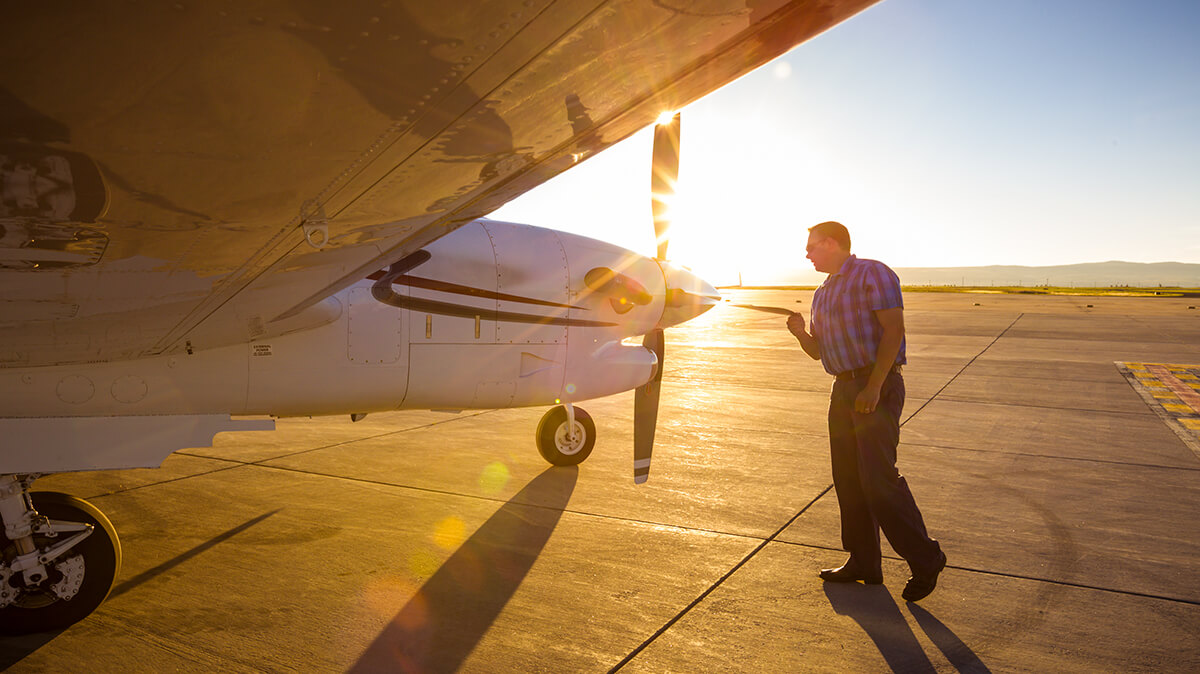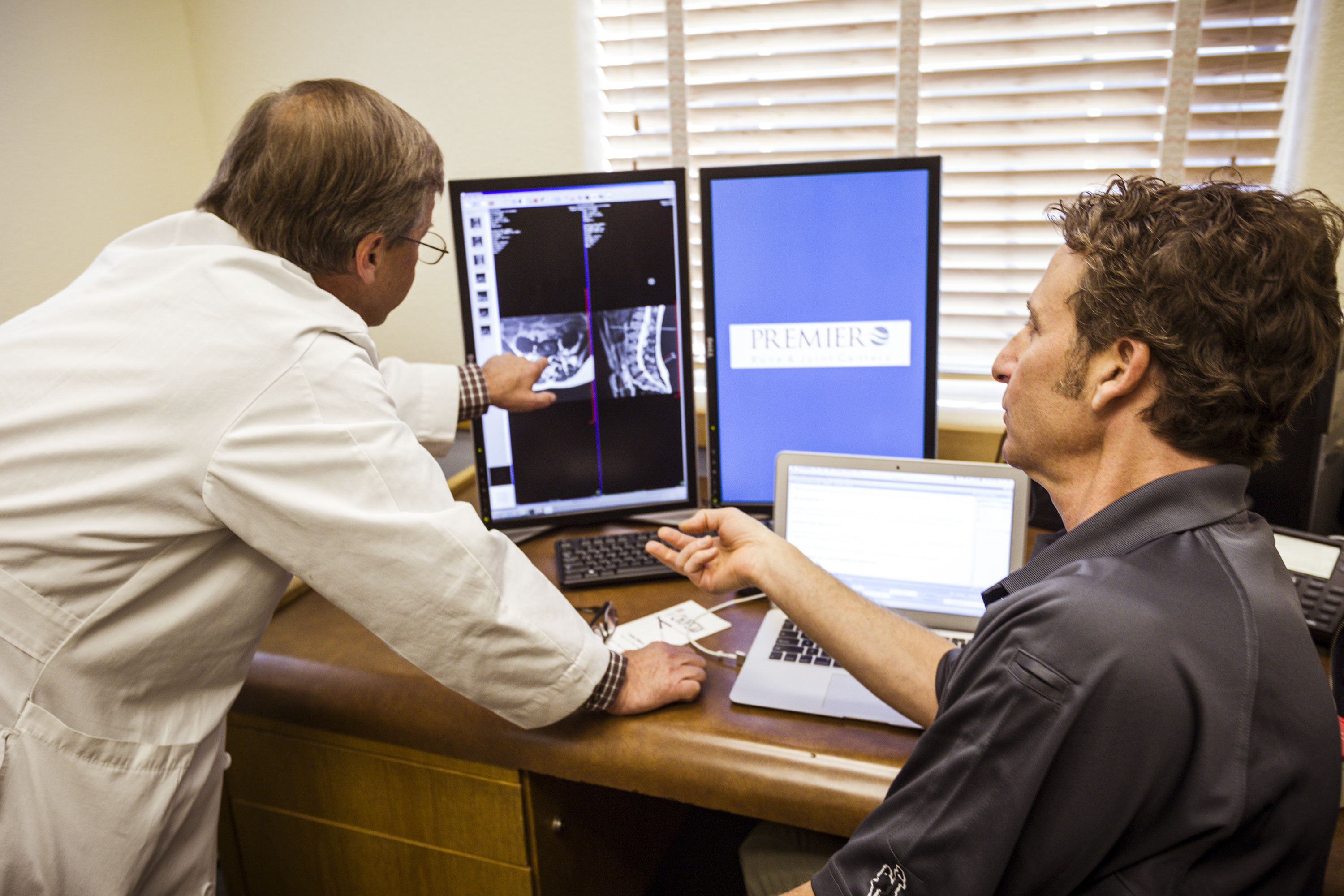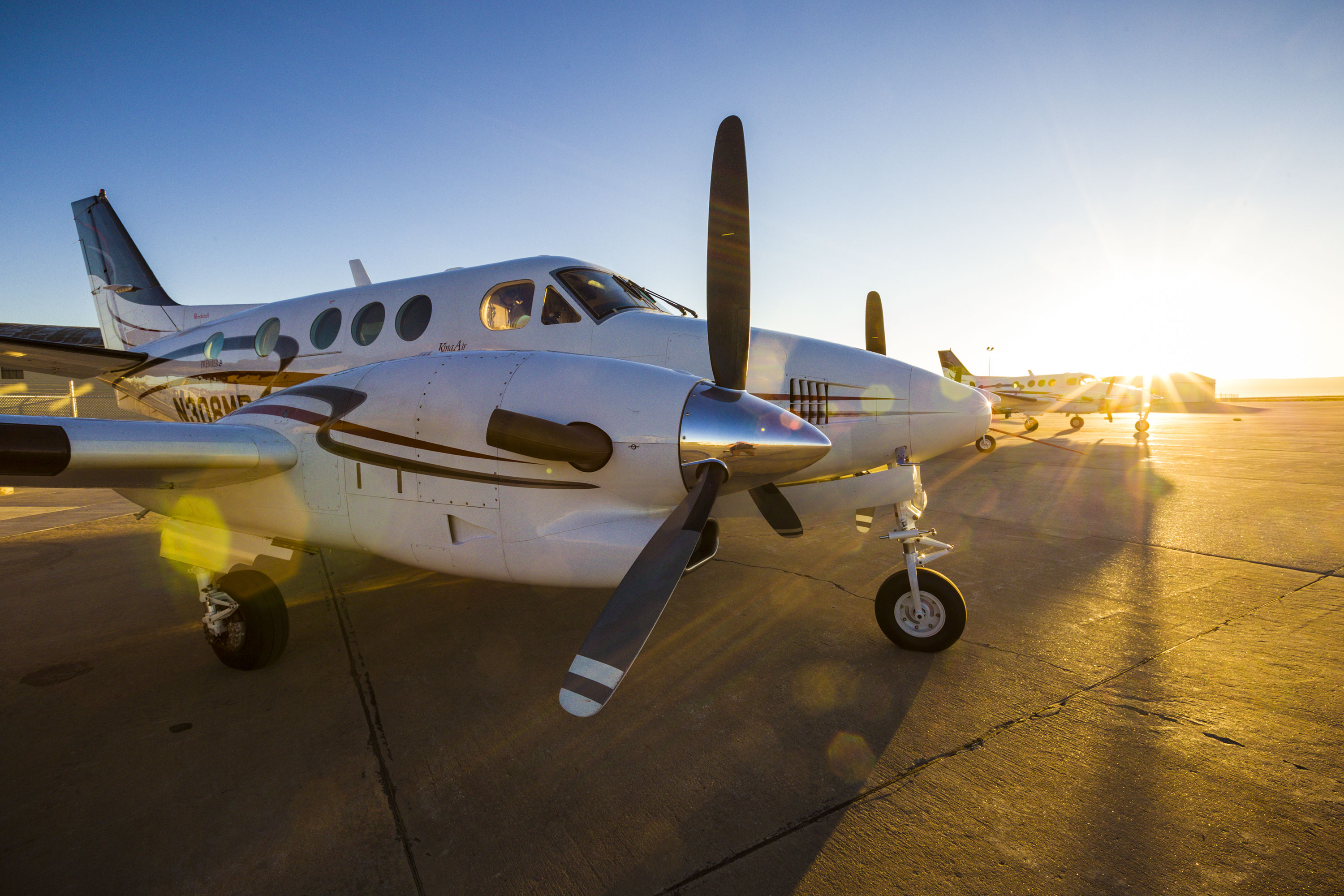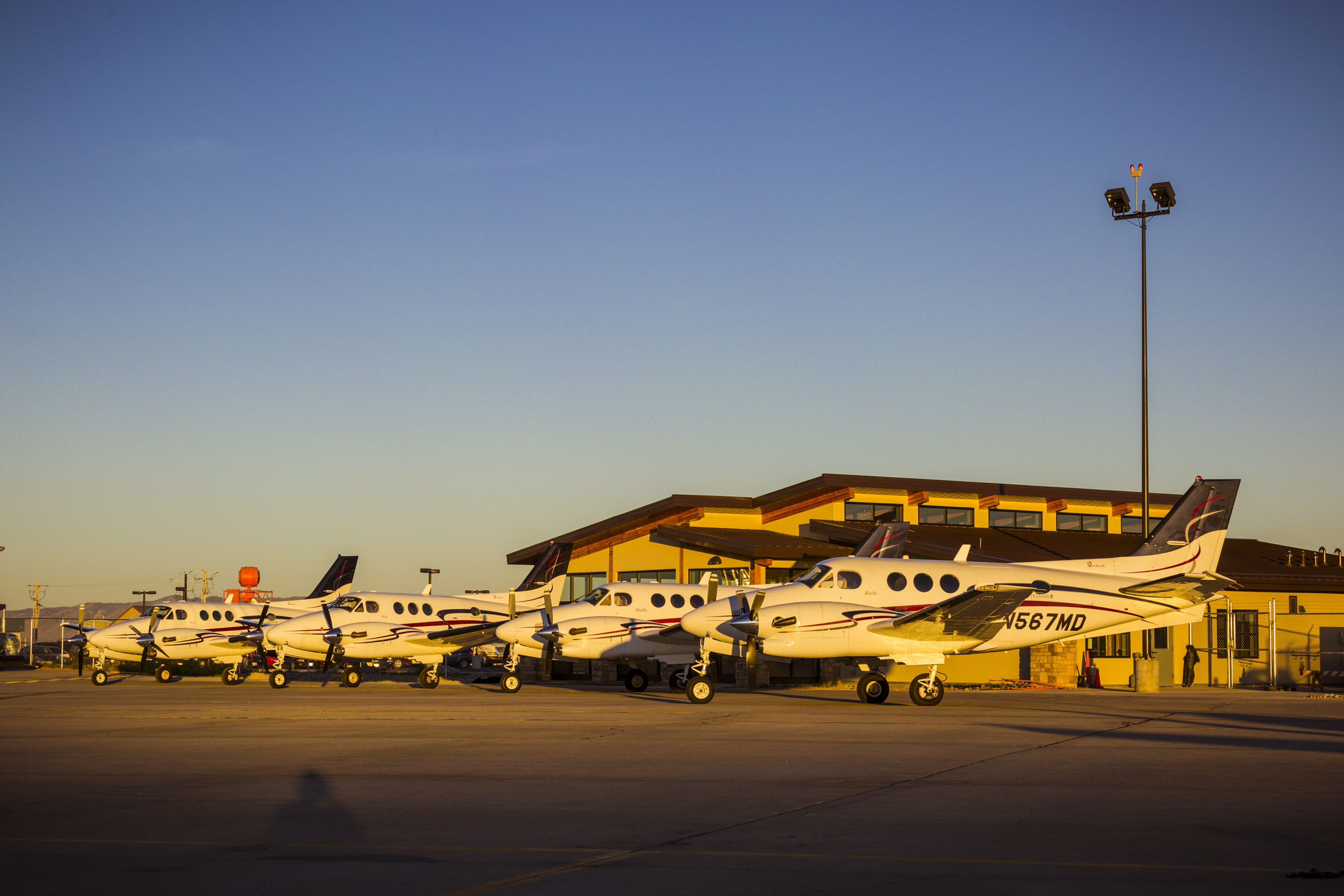
Business aviation enables seven doctors to treat patients all across Wyoming.
Jan. 3, 2016

It’s a clear summer morning in Casper, Wyoming’s second largest city, as the King Air C90A pulls up to Atlantic Aviation’s ramp and Chief Pilot Cody Diekroeger cuts the engines. Dr. Lawrence Jenkins is the first down the airstair, followed by Dr. Michael Kaplan and two nurses. All of them pile into a van that has the same logo as the airplane: Premier Bone & Joint Centers.
After a quick post-flight check of the airplane, Diekroeger jumps out of the cockpit and into the van’s driver’s seat. It’s a 20-minute drive to Premier’s clinic in Casper, where the doctors and nurses are greeted by an office assistant and two radiology technicians.
Before 8 a.m., the clinic is open, and Dr. Jenkins and Dr. Kaplan are already seeing their first patients.
“We hit the ground running. Everyone knows what they’re supposed to do and does it,” says Diekroeger, who’s also director of transportation. “Doctors don’t like to sit around, and patients don’t like waiting.”

Four Pilots, Four Aircraft
With just seven doctors, Premier runs 11 orthopedic clinics across Wyoming, serving about 75 percent of the state. All the doctors are based out of Premier’s headquarters in Laramie, WY. On this day, Drs. Thomas Bienz and Dan Levene performed surgeries in Laramie, while the others visited the satellite clinics, often hitting two per day. The doctors are flown across the state by four King Airs and four pilots.
The pilots are the flight department. Premier has never employed maintenance technicians or schedulers. With short legs and well-established routes, they fly single-pilot. The pilots carry out a host of ancillary duties and rely on a trusted network of vendors for everything else (see sidebar).
On most days three planes are in the air; some days all four, but having a little extra capacity enables Premier to stagger scheduled maintenance, pilot training and time off. Even though all the King Airs are equipped with the same avionics, each pilot is paired with a specific airplane.
“We line up each pilot’s recurrent training with the inspections on his aircraft,” said Diekroeger. “Two pilots go [for training] in the spring and two in the fall, to minimize downtime.”
The pilots don’t even have offices. After flying into Casper and dropping off the medical team at the clinic, Diekroeger sets his iPad on an open desk and answers emails. When the last patients arrive, he leaves to fuel the van and pick up lunch for the medical staff.
In addition to the four airplanes, Premier has 10 vans and cars positioned around the state. The pilots may fly three 30- to 80-minute legs a day, but in between, “we have other things to do,” said Diekroeger. “The job is more than just flying.”

Specialty Care, Rural Setting
Some of Premier Bone & Joint’s clinics, including those in Cheyenne and Wheatland, are close enough to Laramie to drive to, but Casper is a 2.5-hour drive each way. Gillette, in northeast Wyoming, is more than four hours away by car.
“Long drives are part of the culture in Wyoming, but we couldn’t serve a rural community without this [operating] model,” said Tom Wolfe, Premier’s CEO. “In the big cities, the patients come to the doctors’ office. Here, you have to reverse that, and bring the specialists to the people.”
Premier Bone & Joint’s doctors are orthopedic and musculoskeletal specialists, with sub-specialties such as knee surgery, total joint replacement, sports medicine, hand surgery or physical medicine.
“I don’t see how we could operate 11 clinics without airplanes,” said Jenkins, a spinal surgeon. “If we didn’t fly, we’d probably only have two or three doctors, and we couldn’t bring sub-specialist care to these small towns. During winter in Wyoming, there are lots of days when the roads are so bad we couldn’t get there.”
On this particular day, the summer weather holds, while the two doctors wrap up their morning visit to the Casper clinic. After seeing 17 patients in Casper, Jenkins and nurse Jamie Moore will fly with Diekroeger to Gillette, where they’ll see another eight patients. Kaplan will remain in Casper to perform some spinal injections.
“The pilots are wonderful,” said Moore. “We’ll see patients all morning, then they’ll drive us to the airport and fly us to the next clinic.”
As Jenkins and Moore are climbing aboard one of Premier’s King Airs at the Casper airport, pilot Vince Hedrick has just landed a second King Air carrying Dr. Jay Carson from the Riverton clinic.
All the Premier Bone & Joint pilots have been in contact with each other all morning via phone and text. As their paths cross on the ramp, Diekroeger and Hedrick quickly check in, confirming who will fly Kaplan back to Laramie.
Long drives are part of the culture in Wyoming, but we couldn’t serve a rural community without this [operating] model.
Meanwhile, a third King Air, flown by John King takes Dr. Ryan Aukerman from Rock Springs to Cheyenne. All three left Laramie before 7 a.m. and won’t return until after 5 p.m.
“It’s a long day,” said Jenkins, who will be in Gillette in the afternoon to see patients who called in while he was 150 miles away. “We try to make it as seamless as possible for patients.”

Doctors and Pilots Go Mobile
It may sound complicated, but Diekroeger keeps the flight schedule for all four company planes on a simple spreadsheet. When the schedule changes, he emails revisions out to all the doctors, traveling nurses and pilots.
“This is our dispatch center, right here,” says Diekroeger, holding up his iPhone. The pilots also use an iPhone app to go through their pre-flight checklist, file their flight plans and do weight-and-balance calculations.
When the schedule changes – usually about 25 times a month – it’s usually driven by patients’ needs. “As much as we can, we do surgeries at the satellite sites,” said Dr. Mark McKenna, who recently repaired a hand tendon at a clinic 100 miles from Premier’s main surgery center. “Normally, a patient would have to go to Denver for that. We couldn’t do this without the airplanes. They’re vital to the business.”
Learn more about this NBAA member at www.premierboneandjoint.com.

Everything They Need, Nothing They Don’t
Premier’s flight operation has never needed a full-time maintenance department or office staff. For everything they can’t do themselves, the pilots count on time-tested vendors.
To enhance safety, all the pilots go to Simcom in Orlando, FL for recurrent training with the same instructor. And when a pilot goes to Orlando, the King Air he flies goes to Denver for its 200-hour inspection at Hawkeye Aviation.
“They’re real King Air specialists at Hawkeye,” said Diekroeger. “They’ll even drive up to Laramie to check out squawks for us. They understand we can’t afford to be down an airplane.”
Vector Aerospace handles Premier’s powerplant maintenance, from troubleshooting to hot sections and overhauls.
Natrona Avionics services the avionics. In 2013, all of Premier’s airplanes were outfitted with Garmin G600 displays, including Nexrad and synthetic vision. At Premier’s home base of Laramie Regional Airport, FBO Cowboy Aviation takes care of all the rest.
“We trust our vendors implicitly, they really look out for us,” said Diekroeger. “It’s as if they’re extensions of our flight department.”


 International Business Aviation Council Ltd.
International Business Aviation Council Ltd.